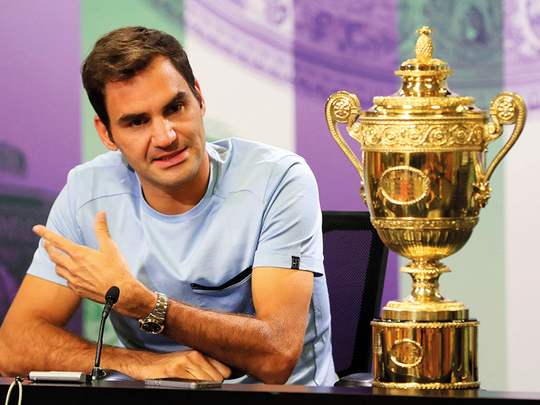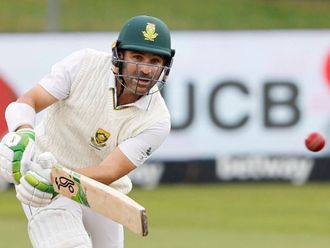
Washington: With Wimbledon expected to be cancelled on Wednesday because of the risk posed by the novel coronavirus, the 2020 tennis calendar will take yet another unprecedented twist.
And the decision, coming on the heels of the French Open’s announcement that it will postpone its start from May 24 to September 20 in the interest of public health, may well affect the legacies of the sport’s top players as they chase additional Grand Slam titles before retiring.
Wimbledon’s expected cancellation - an official announcement is scheduled for Wednesday, but a German tennis official told Sky Sports that a decision has been made - will reduce the number of Grand Slams held in 2020 from four to three at a time when Roger Federer, Serena Williams, Rafael Nadal and Novak Djokovic are battling age and younger rivals to extend their career tallies of major championships.
The French Open’s plan to start just one week after the US Open is scheduled to conclude (September 13) sets up a logjam that may force top players to decide which of the two Grand Slam events to enter.
As its stands, players who reach the final weekend of the US Open and play the rescheduled French Open would have to contest four weeks of Grand Slam-calibre matches - for men, best-of-five-set matches rather than best-of-three - on two radically different surfaces over a five-week span.
“It’s almost impossible,” said Tennis Hall of Fame inductee Donald Dell, a former US Davis Cup captain turned sports agent and co-founder of the Association of Tennis Professionals. “With the US Open and French Open being so close, in some ways I wouldn’t be surprised if the top 20 players select the one with the surface that’s best for them. Federer’s best chance is on concrete. Some players are much better on clay, like Nadal and [Dominic] Thiem. Djokovic, it seems, can play on water!”
The notion of the world’s best having to choose between the US Open and French Open is nothing any tennis fan wants to see. But it may come down to a calculated decision about which event gives title contenders the best chance of claiming another major.
Federer, who’ll turn 39 in August, leads all men, with 20 Grand Slam titles. Nadal, who will turn 34 in June, has 19. And Djokovic, 32, claimed his 17th major at the season’s outset by winning a record eighth Australian Open.
On the women’s side, Williams is without peer in the modern era, with 23 Grand Slam singles titles. Yet at 38, she is chasing the one goal to elude her: tying and surpassing Margaret Court’s record 24.
Although New York is the epicenter of the coronavirus, the US Tennis Association is proceeding with plans to hold the US Open at Flushing Meadows as scheduled, August 24-September 13.
“We’re very hopeful, we’re very optimistic that the 2020 US Open will occur on its scheduled dates,” said Chris Widmaier, managing director of corporate communications for the US Tennis Association, which runs the US Open, in a telephone interview Monday. “Because of that, our plans are ongoing.”
Widmaier added that tournament officials were proceeding with “our eyes wide open.”
Citing German Tennis Federation Vice President Dirk Hordoff, Sky Sports Germany reported Sunday that officials of All England Lawn Tennis Club, which hosts Wimbledon each June, have decided against the limited options available for safely staging the tournament in 2020, which included contesting it without spectators.
It would be the first time the grasscourt event has been cancelled since 1945 and the first time it has been cancelled for reasons other than war. Wimbledon wasn’t held in 1915-18 because of World War I; it was suspended again from 1940 to 1945 because of World War II.
Options other than cancelling Wimbledon have been considered, including postponement.
Because Wimbledon is played on grass, which is costly and labour-intensive to maintain, the two-week tournament can’t be easily postponed. The window for competing on the All England Club’s grass doesn’t extend past late summer.
Even in the best of times, the global tennis schedule is complex and politically fraught, with events often overlapping. That’s largely because tennis is governed by entities that don’t always see eye to eye; among them: the International Tennis Federation; the ATP (men’s Tour); the Women’s Tennis Association; and the entities that run the four Grand Slams (Tennis Australia, the French Tennis Federation, the private All England Lawn Tennis Club and the USTA).
Tinkering with the timing of any major event, and particularly a Grand Slam, is disruptive at best and potentially catastrophic, akin to removing a foundational toy block from a child’s tower without it toppling.
- Washington Post











